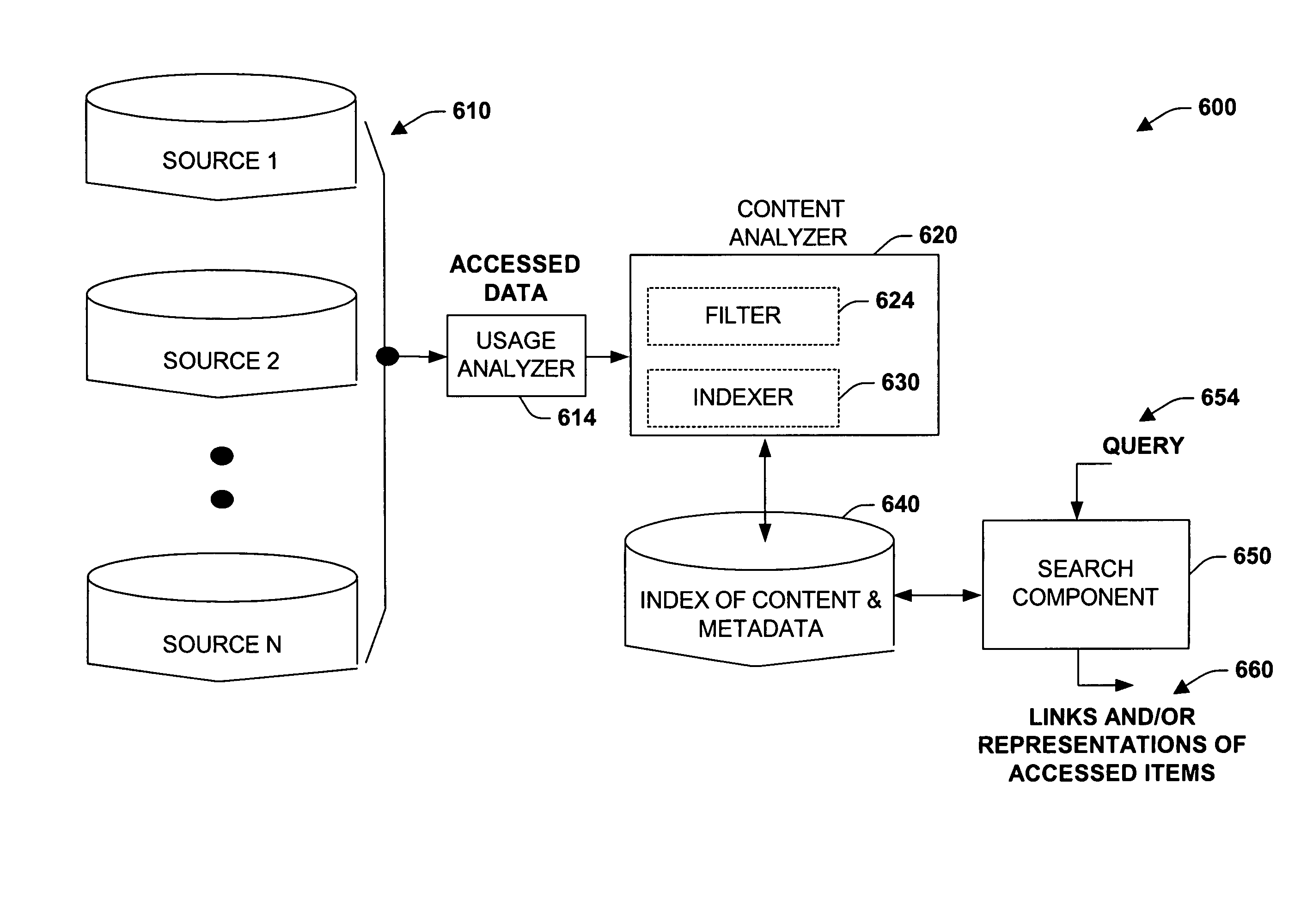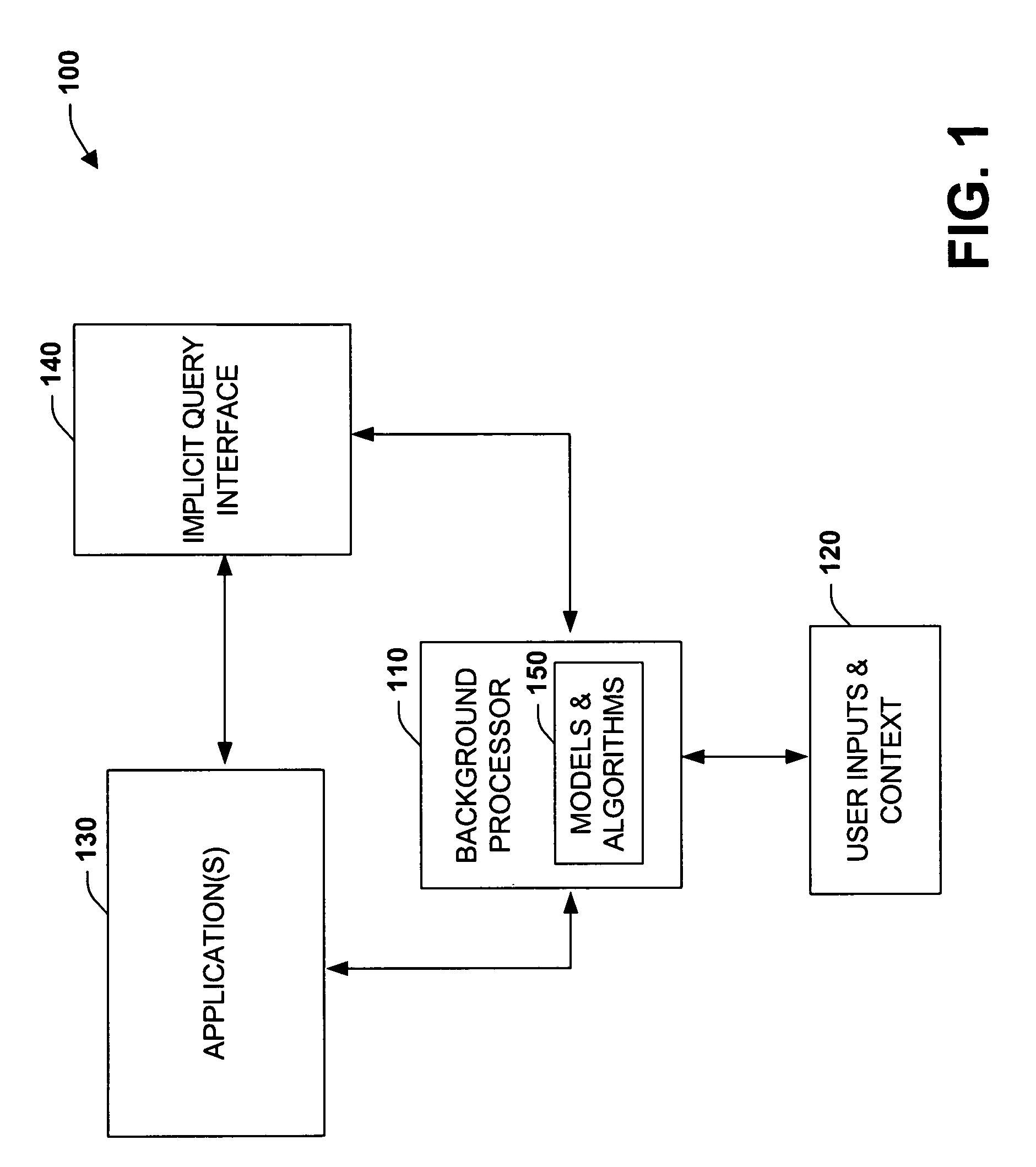Systems and methods for performing background queries from content and activity
a background query and content technology, applied in the field of computer systems, can solve problems such as unobtrusive and lightweight manner, and achieve the effect of efficient information location
- Summary
- Abstract
- Description
- Claims
- Application Information
AI Technical Summary
Benefits of technology
Problems solved by technology
Method used
Image
Examples
Embodiment Construction
[0022]The present invention relates to systems and methods relating to implicit or background queries for contextualized searches. Most information retrieval systems start with a user's explicit query. Implicit query (IQ) refers to systems and methods in which context-sensitive searches are automatically generated based on ongoing computing activities. In one aspect, implicit queries run when users are reading or composing information such as e-mail, for example. Thus, queries can be automatically generated by analyzing an email message or other application, and results can be presented in a small pane adjacent to a current window to provide peripheral awareness of related information.
[0023]Information items from a plurality of disparate information sources can be automatically searched and a user interface provided to efficiently present the items in a cognitively relevant manner. Various display output arrangements are possible for the retrieved information items including enhance...
PUM
 Login to View More
Login to View More Abstract
Description
Claims
Application Information
 Login to View More
Login to View More - R&D
- Intellectual Property
- Life Sciences
- Materials
- Tech Scout
- Unparalleled Data Quality
- Higher Quality Content
- 60% Fewer Hallucinations
Browse by: Latest US Patents, China's latest patents, Technical Efficacy Thesaurus, Application Domain, Technology Topic, Popular Technical Reports.
© 2025 PatSnap. All rights reserved.Legal|Privacy policy|Modern Slavery Act Transparency Statement|Sitemap|About US| Contact US: help@patsnap.com



